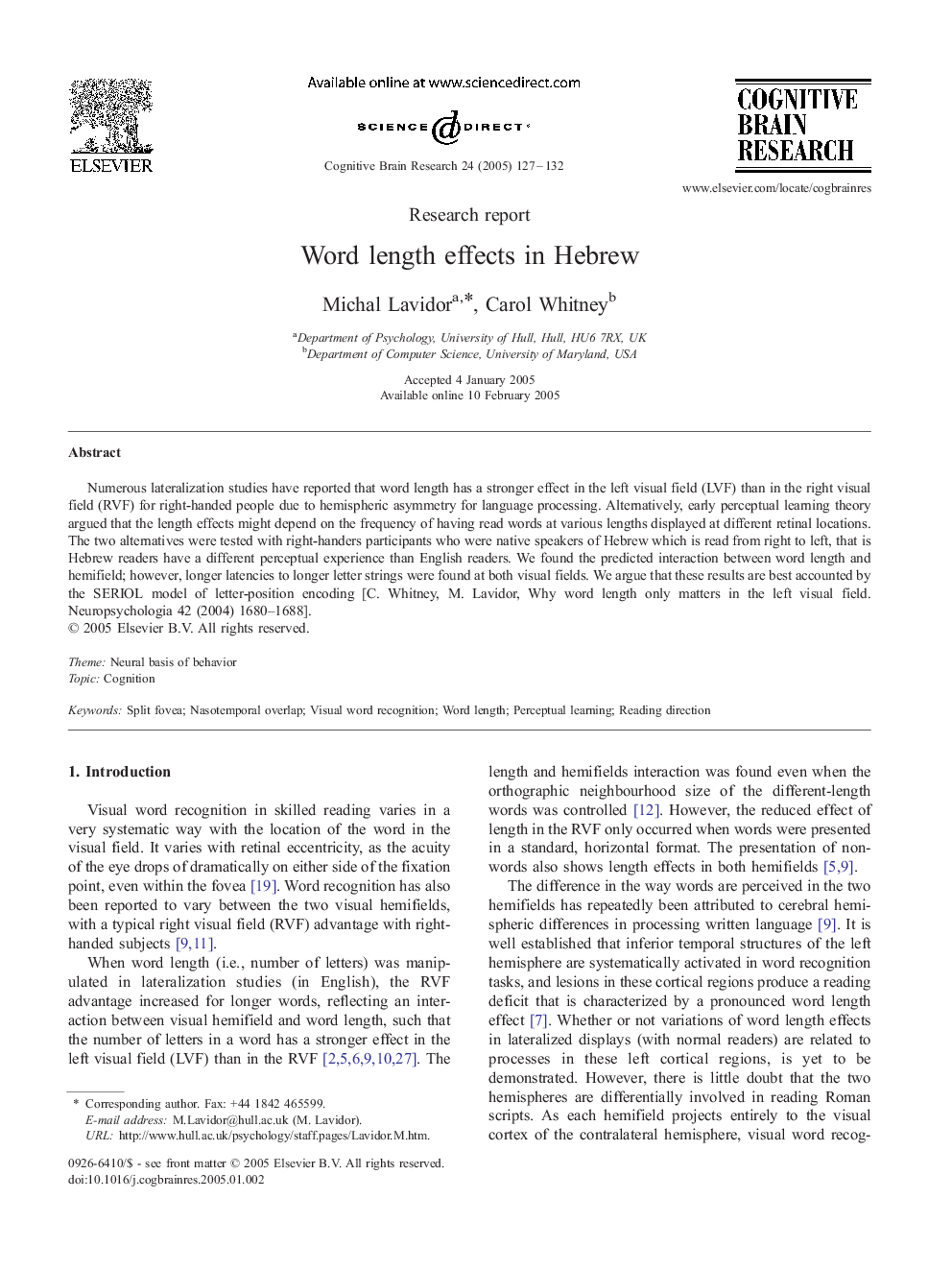| Article ID | Journal | Published Year | Pages | File Type |
|---|---|---|---|---|
| 9408105 | Cognitive Brain Research | 2005 | 6 Pages |
Abstract
Numerous lateralization studies have reported that word length has a stronger effect in the left visual field (LVF) than in the right visual field (RVF) for right-handed people due to hemispheric asymmetry for language processing. Alternatively, early perceptual learning theory argued that the length effects might depend on the frequency of having read words at various lengths displayed at different retinal locations. The two alternatives were tested with right-handers participants who were native speakers of Hebrew which is read from right to left, that is Hebrew readers have a different perceptual experience than English readers. We found the predicted interaction between word length and hemifield; however, longer latencies to longer letter strings were found at both visual fields. We argue that these results are best accounted by the SERIOL model of letter-position encoding [C. Whitney, M. Lavidor, Why word length only matters in the left visual field. Neuropsychologia 42 (2004) 1680-1688].
Keywords
Related Topics
Life Sciences
Neuroscience
Behavioral Neuroscience
Authors
Michal Lavidor, Carol Whitney,
